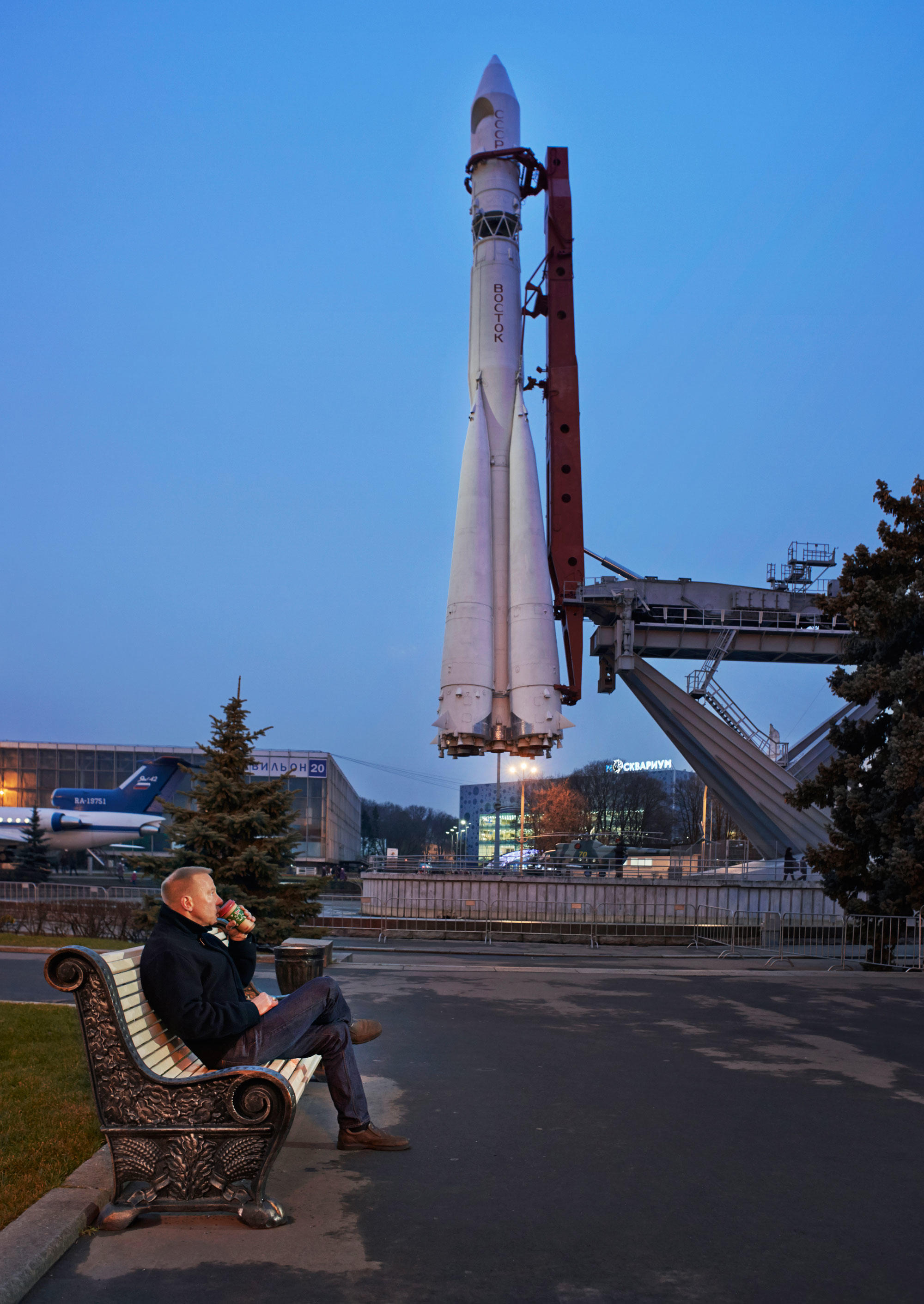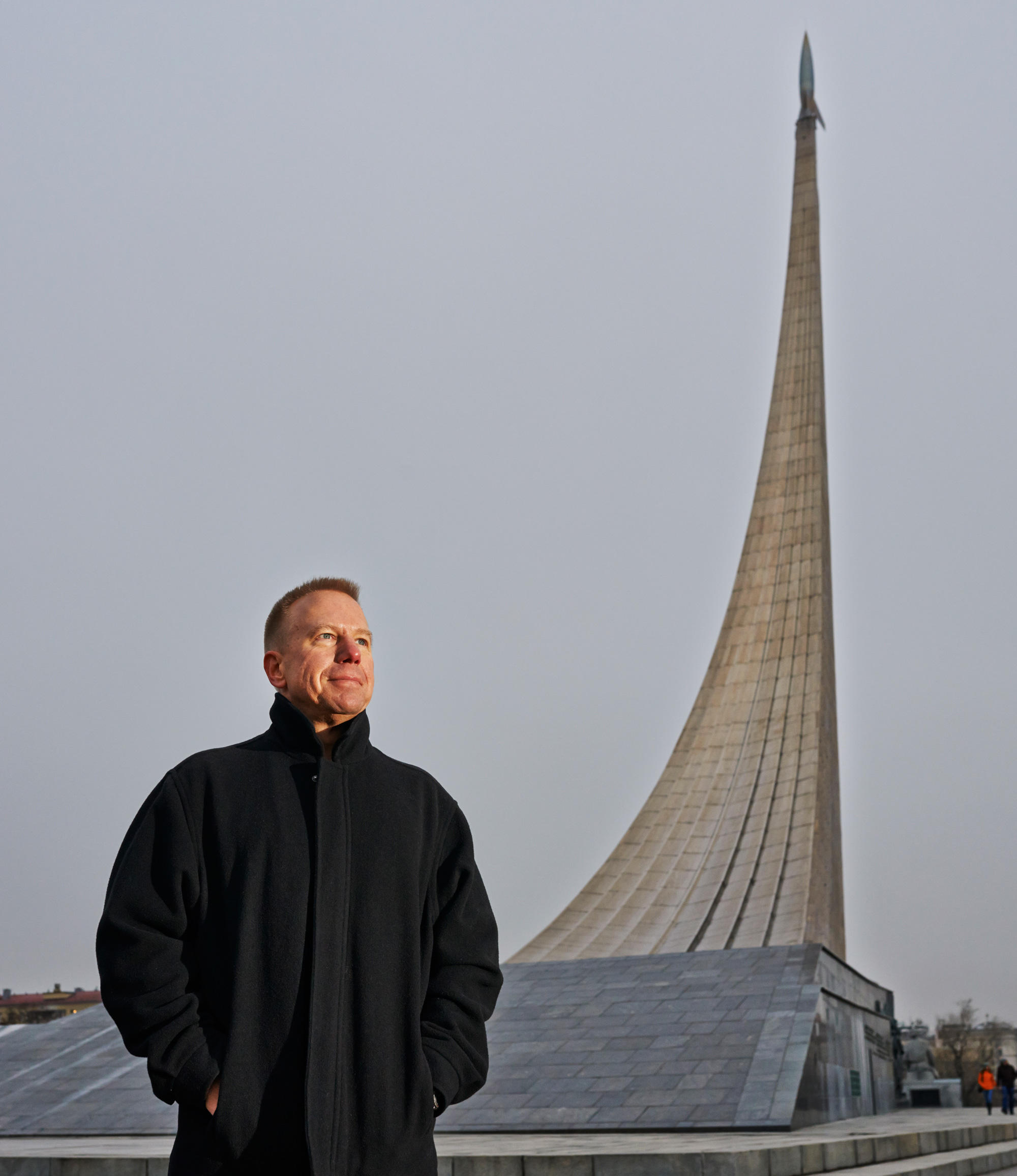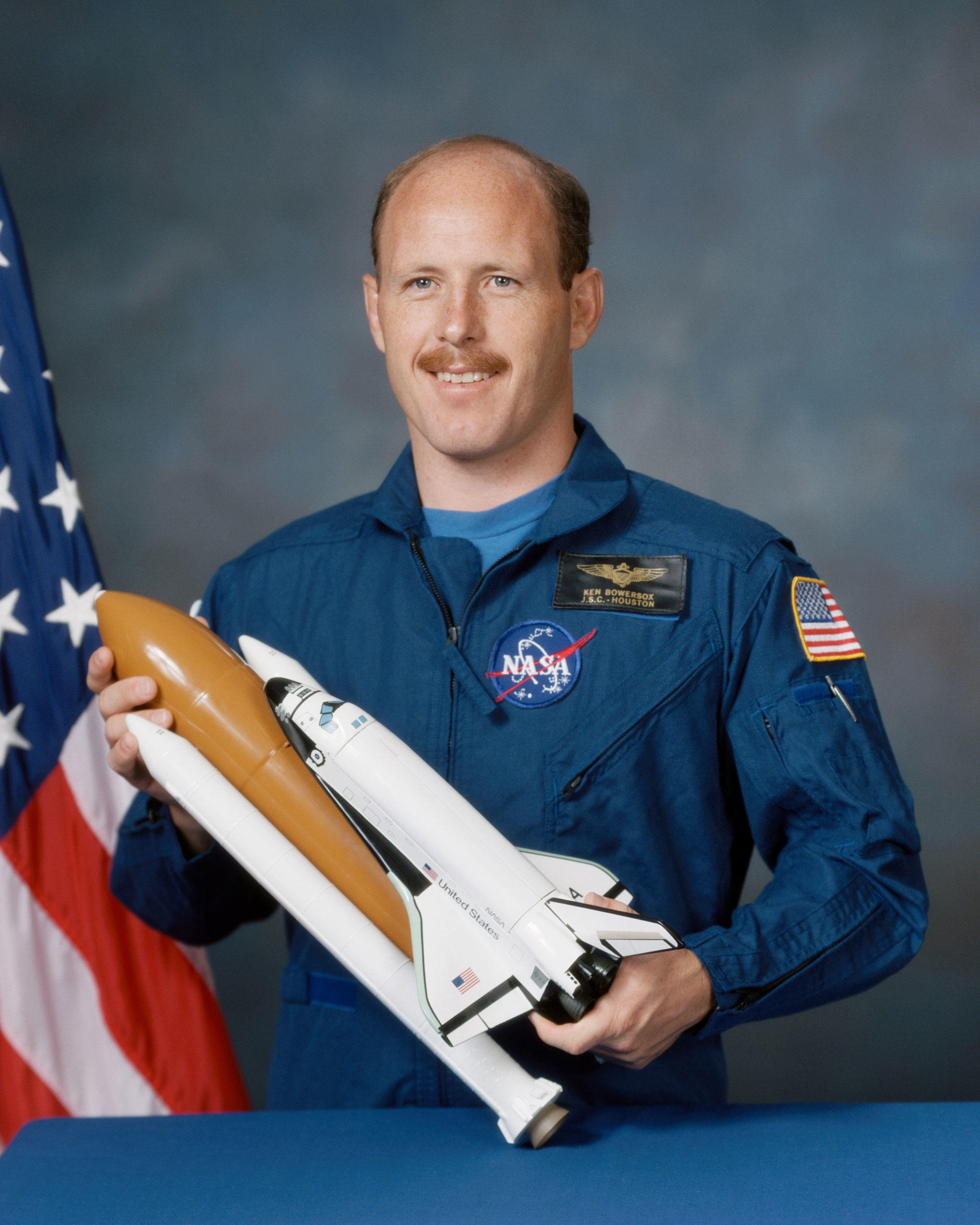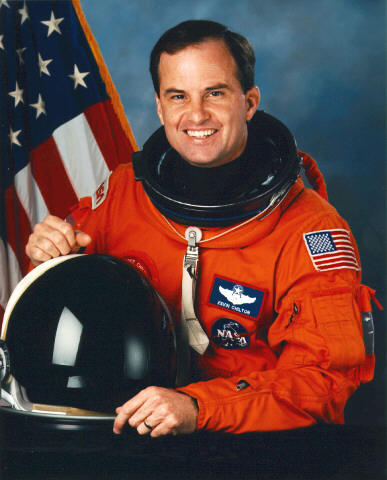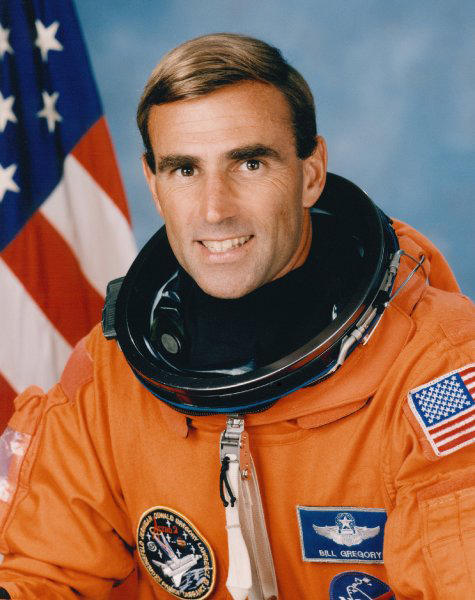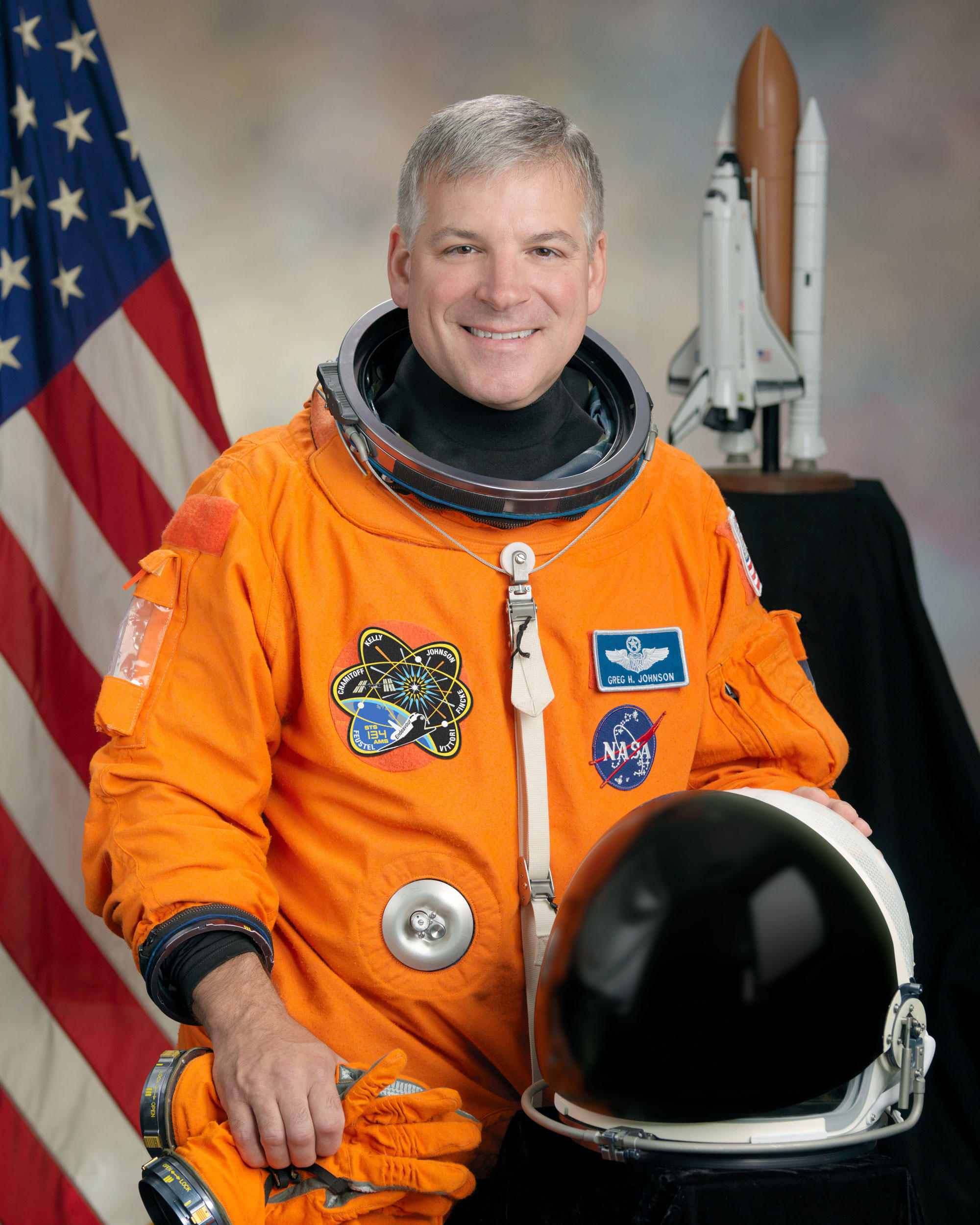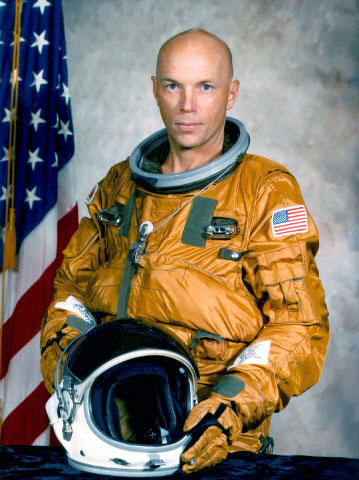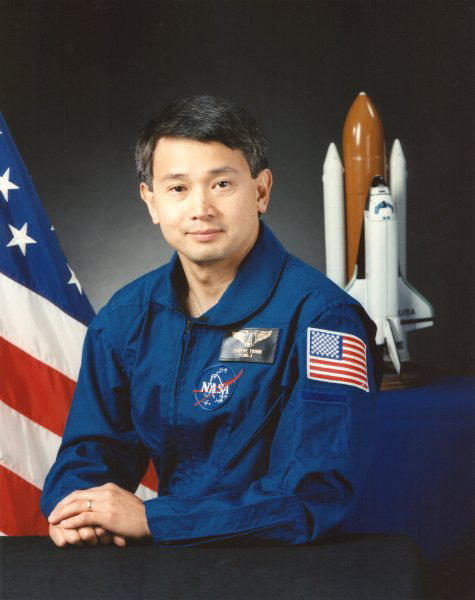
The American astronaut is on his back. In his white suit he lies in the custom-contoured seat, knees bent. That’s the best way to take the g-forces. When the rocket zooms toward the atmosphere’s dome, the astronaut will feel the pressure of five times his weight — nearly a thousand pounds — drive into his chest.
Through the visor of his helmet he studies the control panel, its dials and buttons marked with Cyrillic characters. He knows this board like the back of his gloved hand, having spent much of the past two years in Star City, the Russian space-training complex near Moscow. Though the spacecraft is fully automatic, no system is infallible, and the astronaut has practiced, ad nauseam, manual docking and manual descent in the Star City simulator. Now he’s inside the real thing — a Soyuz spacecraft poised atop a slim Soyuz rocket at the Baikonur Cosmodrome, in the desert steppe of Kazakhstan.
In every sense, Tim Kopra ’13BUS is locked in. It is December 15, 2015, just after 5 p.m., and Kopra is in the leftmost seat — the copilot’s seat — for Expedition 46 to the International Space Station (ISS). To his right is flight commander Yuri Malenchenko of the Russian Federal Space Agency. To Malenchenko’s right is Tim Peake, a Briton from the European Space Agency.
It’s freezing in Baikonur and the skies are clear. Not that weather ever matters with the Soyuz. When it’s scheduled to go, it goes. It’s the most dependable rocket ever built — basically the same type the Soviet Union sent up in 1966, in the heat of the Space Race, when Russo-American cooperation was even more of a fantasy than a 450-ton orbiting lab. Fifty years later, a Soyuz is set to take Kopra and crew to the ISS, which houses voyagers from five space agencies — Russian, American, European, Japanese, and Canadian. The astronauts live and work together for months at a time, studying the effects of microgravity on fluid, fire, plants, microorganisms, and, above all, themselves. With each breath of machine-generated oxygen, each sip of recycled water, they are setting the course for long-term human habitation of space.
Kopra, fifty-two, is a retired Army colonel with a blond buzz cut, an aviator’s jaw, and the toothy grin of someone game for a hike at 3 a.m. Since he became an astronaut in 2000, two events — one in the heavens, the other on terra firma — shook his world and altered his path. He won’t take a moment of this six-month trip for granted.
Six months in space. Kopra couldn’t do it without support at home. No astronaut could. What really makes this launch special for Kopra is that his family has come all the way to Kazakhstan to see him off: his wife, Dawn; their daughter, Jacqueline, a sophomore at Princeton; and their son, Matt, a first-year West Point cadet.
Wrapped in their coats on the roof of a building less than a mile away, the Kopras gaze at the launch site. The Soyuz stands straight and cold in the red desert, a white spire banded in gray and orange.
00:10
A few days before his flight, Kopra takes a moment from his regimented schedule to make a point about orbital mechanics. “Space Station is moving at 17,500 miles per hour around the earth,” he says. “It’s continually falling but only slightly descending because of a minuscule amount of drag. This is just as Isaac Newton predicted: he posited that if you shot a cannonball far enough at the right velocity, it would simply go around the planet, which would be curving away at the same rate the object fell. That’s what Space Station is doing, at five miles per second. And the Soyuz has to chase it down.”
How high up is Space Station? For reference, passenger planes don’t fly higher than eight miles in the air. The boundary of outer space is sixty-two miles up. Space Station is about 250 miles above Earth. And since Space Station is falling, its inhabitants are weightless, just as they’d be in an endlessly dropping elevator.
Kopra calls it “Space Station,” never “the space station,” as if it were more a place than a thing. It is as wide as a football field (including the dragonfly wings of its solar arrays), and made up of dozens of modules that were put together — in space — starting in 1998. Inside, it’s like a human Habitrail: tubular passageways lead to pods and chambers (labs, galleys, sleeping compartments), and white Velcroed walls bristle with hoses and gadgetry. There are windows, too.
In 2009, Kopra went to Space Station on the space shuttle Endeavour for a two-month stay. His team brought up parts for the Japanese module, including a platform for experiments, which Kopra attached by operating a robotic arm. This required a five-and-a-half-hour space walk, for which he had to put on a two-hundred-pound protective suit (you don’t feel the weight, but the added mass makes your movements harder to control) and then maneuver his tethered bulk through an open hatch and into the black void. Like all space activity, space walks carry risks, whether it’s decompression sickness (i.e., the bends) or a suit leak (a meteor as small as a grain of sand can cause a catastrophic nick). Some astronauts have described a primordial fear of coming unhooked and drifting away in the dark. But generally, they are so focused on their tasks, and secure in the knowledge that, as Kopra says, “thousands of people are working to keep us safe,” that fear takes a back seat.
And you get to fly. Inside Space Station, astronauts move around by a kind of directional floating. “You use handrails to push off, and you go,” Kopra says. “It’s amazing how fast you adapt to zero gravity.” Of his first mission, Kopra says, “I was totally relaxed. Before I knew it, I was carrying things with my legs like it was another day at the office.” The downside is atrophy. “In space, your bones lose calcium and your muscles weaken because they have no gravity to fight.” For that reason, astronauts must exercise at least two hours a day on special equipment. There’s a treadmill with a harness, and a device that uses resistance to mimic the effects of weightlifting.
When they’re not working (which is seldom), astronauts can read, watch movies, listen to music, and send e-mails (there is Internet service onboard). Kopra’s favorite pastime on his first mission was looking out the window. On Space Station, the sun rises or sets every forty-five minutes. “Those stripes of color on the horizon: violet to blue to yellow to orange to red. It was so beautiful it didn’t look real,” Kopra says. “In daylight you could see a thin film covering the planet — the atmosphere. All else was the blackness of space.
“You begin to realize that you have the earth, and then you have nothing. You recognize that we’re really, really alone.”
00:09
Wake up, Timmy! Wake up!
Danny Kopra yanked his baby brother from his dreams and set him in front of the TV. The screen showed black-and-white images of something so incredible that even six-year-old Tim, up past his bedtime and enlivened by the bolt of history and his brother’s excitement, could grasp its importance. Danny, who was twelve, had a desk crowded with models of Gemini and Apollo rockets. He was born in 1957, the year the Soviets launched Sputnik, the world’s first artificial satellite. Tim was born in 1963, a year after John Glenn became the first American to orbit Earth. Now, on July 20, 1969, at 9:56 p.m. in Austin, Texas (just 150 miles west of Mission Control in Houston, which might as well have been the center of the universe), the brothers watched Neil Armstrong in his puffy white spacesuit bounce on the surface of the moon.
Like millions of other kids, Kopra thought: I want to be an astronaut.
Three years later, Danny woke his brother again, this time after midnight, to watch Apollo 17, the last lunar mission. While the rest of the family slept — their older brother, Andy; their dad, Lennart, the son of Finnish immigrants and a communications professor at the University of Texas; and their mom, Martha, the daughter of a Lutheran pastor — Tim and Danny watched the Saturn V rocket blast off in a fiery convulsion that turned the nighttime into day.
00:08
Kopra, a former Boy Scout, had always been geared toward leadership and service, and when it came time for college, he was accepted to West Point. “Tim was commander of his cadet company,” says Sean McDevitt, a West Point classmate. “It was one of the top-performing companies in the cadet corps. Tim led by positive motivation. He led by example. He set a high bar for every goal and made you want to achieve that goal. People wanted to follow him.”
One day in 1981, as Kopra was eating in the mess hall with 4,500 other cadets, three alumni guests got up to speak. These men were all former astronauts. One of them, Frank Borman, was commander of Apollo 8, the mission on which humans first orbited the moon. “I didn’t have sports heroes growing up,” Kopra says. “My idols were astronauts. To think that Borman had once been a plebe himself and sat in this same mess hall — and became an astronaut. Suddenly the dream didn’t seem so crazy.” That same year, on April 12, a new vehicle, Space Shuttle Columbia, took off from Cape Canaveral, Florida, and returned two days later, landing like a glider — the world’s first reusable spacecraft.
00:07
After four years at West Point, Kopra had to decide what branch of the Army to serve in. He chose aviation.
It wasn’t just the thrill of flying that lit the flame in his gut. “For me, it’s about having a task, performing it as well as you can, and always finding room for improvement,” he says. “What I like about aviation is that it requires a blend of technical, operational, and leadership skills. It’s extremely demanding.” He spent three years at Fort Campbell, Kentucky, in the 101st Airborne, training on scout helicopters like the Bell OH-58 Kiowa — “no buzzers or whistles, no GPS, just a manual and maps.”
In May 1990, Kopra married Dawn Lehman of Lewisburg, Kentucky. That summer, Iraq invaded Kuwait. By fall, Kopra had completed training in an Apache helicopter — essentially a flying tank, with night vision and three weapon systems to take out armored vehicles. By December, Kopra was flying Apaches in Operation Desert Shield.
After the war, Kopra went to school and became an experimental test pilot, an elite and dangerous job whose most famous practitioner was the original sound-barrier buster, Chuck Yeager. These pilots explore the outer limits, take a machine to the screaming edge of its capacity. Or, as Kopra puts it: “If an aircraft has a new weapon system or new aerodynamic qualities, you have to try them out.”
He was aware, of course, that America’s first astronauts — the Mercury Seven — had all been test pilots. Where else was there to go, really, but up?
00:06
In 1998, NASA invited Kopra to work as an engineer at Johnson Space Center in Houston. It was a sign that the agency saw Kopra as astronaut material. After two years, Kopra, now a father of two, applied for the astronaut class of 2000. NASA was looking for seventeen people: doctors, pilots, flight-test engineers, and scientists. Six thousand applicants were whittled down to six hundred, then to 120, Kopra included. He was brought in for tests and an interview. The interview was key. You sat facing eighteen NASA representatives and were basically asked one question: what have you done since high school?
Kopra had done a few things since high school. He started going over them.
He was testing hardware at Marshall Space Flight Center in Huntsville, Alabama, when the phone rang. It was the deputy director of Johnson Space Center calling. Kopra had been selected.
“I was overwhelmed,” Kopra says. “You dream of this as a kid, and now it was actually happening. It’s a pinnacle moment. At the same time, I recognized that the real work was just beginning.” He spent the next two years learning about the space shuttle and Space Station, and how to operate their systems.
By 2003, Kopra was in line to go to space. That’s when things changed.
00:05
On January 16, 2003, the space shuttle Columbia lifted off from Cape Canaveral with a crew of seven for a two-week research trip. Eighty-two seconds into the launch, a piece of foam insulation broke off from the external fuel tank and struck the thermal protection tiles on the left wing, punching a dinner-plate-sized hole. The shuttle made it to orbit, and the mission went as planned. On February 1, Columbia headed back to Earth. Just after 9 a.m., the shuttle reentered the atmosphere, a high-friction event that produced three-thousand-degree heat on the craft’s protected surface. Hot gases entered the gash in the wing, and the shuttle broke apart, forty miles above East Texas. Fragments fell across a two-thousand-square-mile swath.
Kopra was called to assist in the recovery mission. His job was to help organize the recovery of Columbia using helicopters and airplanes to identify debris, which was then retrieved by a ground force of 3,500 firefighters and volunteers combing the East Texas woods.
Shuttle launches were suspended for thirty months. During that time, the space-station program relied on the Soyuz to carry personnel, and Space Station crews were reduced to two people.
It was a grim period for Kopra. The loss of Columbia was a terrible blow. Then, in 2005, Danny Kopra died of a heart attack at forty-eight.
On July 15, 2009, Kopra went to space. Neither his father, who died in 1998, nor Danny was able to see it, but his mother and his brother Andy were there. Dawn and the kids got to watch from a rooftop at Kennedy Space Center as Endeavour, bound for Space Station, rose from great cauliflower clouds on a column of flame.
Kopra returned to Earth on September 11, 2009, aboard Discovery. Even before he got his gravity legs back, NASA invited him to go on Discovery’s final flight. The space-shuttle program was ending, and Kopra was to be a part of history.
00:04
The front tire hit a slick spot and the astronaut went flying. It was January 15, 2011. Six weeks before Discovery’s final mission, Kopra was sprawled on the asphalt of a suburban Houston street. His bicycle lay nearby.
Dawn Kopra drove up and saw her husband lying there. Her heart dropped. He was conscious, but in severe pain. His hip was broken.
Kopra couldn’t believe it. He’d trained for more than a year, endured a string of launch delays, hurled himself into the job body and soul — and now this. “Astronaut Tim Kopra Injured in Bike Accident,” reported CBS News. Given the extent of his injury, there was no chance of his flying on Discovery.
Kopra was crushed. For him, there could be few worse things than being scratched from a mission. But that wasn’t all: with the shuttle program ending and fewer astronauts going up, Kopra was staring at the end of his space career.
Grounded, Kopra mulled his options. “I’d been a military guy, and was a government guy,” he says. “I didn’t have much experience in the business world, but I’d always had an interest.” Now he had time. He applied to Columbia Business School’s executive MBA program and got in. “My primary focus was to learn some new skills and also to better understand what opportunities are out there.”
Kopra, who had earned a master’s degree in aerospace engineering from Georgia Tech in 1995, liked grappling with arcane concepts. “At Columbia, I tried to learn something I knew little about, which is finance, and tried to focus on something I knew more about, which is leadership,” he says. The twenty-month part-time course also allowed Kopra to see the world in a way he couldn’t from a spacecraft window. “I took a class in Buenos Aires, so I spent a week there. One of the lectures was in Dubai, and I spent a week there. NASA agreed to let me take these breaks, and I balanced my work and business school.
“In my B-school classes, we learned about human behavior, decision-making, leadership techniques, and organizational structure. What I found is that leadership, whether in the military, in the space program, or in business, is always about the same thing: people.”
For Kopra, the executive MBA program was “one of the best experiences of my life,” and not least for how it expanded his social orbit. “I now have great friends in Peru and Mauritius,” he says. “Who’d have thunk?”
00:03
With an MBA in hand, Kopra was preparing for his future — but it was a future he hoped to delay. There was other business he had to attend to.
“A lot of people would have given up after that injury,” says McDevitt, Kopra’s West Point classmate. “They would have said, ‘That’s the end of my space career.’” But once doctors confirmed he could recover, Kopra immediately began training to be eligible for another space flight. “He was absolutely determined to push forward,” says McDevitt. “That’s the embodiment of Tim. He turned a devastating, apparently career-ending injury into a situation where he’s going to be the commander of Space Station.”
If you’re going to come back, you might as well come back all the way. As Space Station commander, Kopra will be responsible for operations inside and outside the ISS, and for maintaining the cohesion of the crew. He calls it “a unique leadership challenge,” in that it involves a few people onboard and an enormous team on the ground. “Good communication is absolutely critical,” he says.
Listening to Kopra talk leadership and teamwork just as the first space tourists are piercing the atmosphere in commercial rockets is a good reminder that astronauts are in it for more than the adventure.
“Sometimes people think astronauts are just big risk takers, thrill seekers,” Kopra says. “I don’t think that’s the case. What motivates us is the mission. If anything, one of the greatest skills of the people in our profession is being able to assess risk. When your life is in peril, your personal radar for understanding where you are becomes highly attuned.
“That said, there’s definitely a sense of excitement in riding on a rocket and docking at Space Station. It’s an experience of a lifetime. I remember undocking and looking at Space Station, and just being in awe. You can’t even describe how cool this thing is, and not simply because of how big it is and how complex it is, but for what it represents: all these nations and the human effort to build this thing — in space. It’s mind-blowing.”
00:02
The first time Kopra saw Earth from space was in 2009, when he went from Endeavour’s mid-deck to the flight deck and looked out the window. His response to the planet as seen from space was physiological. Kopra’s internal instruments of balance and vision were thrown; the sight of the earth moving made him feel as if he’d spun briskly around in a chair and stood up. It took a little time to adjust.
But even more disorienting is returning to Earth. After a couple of months of weightlessness, your hand-eye synchronization is wonky and your inner-ear settings are shut off, and you have to spend forty-five days in a rehab program to regain muscle strength. “It’s a little miserable,” Kopra says with a laugh. “For the first two days it’s like a cross between the flu and a terrible hangover.”
Time will tell how a six-month trip affects him. But he already knows what he wants to do after he comes back this spring, as “therapy.” He wants to get a motorcycle.
00:01
On a cold day in Moscow three weeks before his launch, Kopra walked through the All-Russia Exhibition Center, a vast park of space-themed sculptures and monuments, aircraft and spacecraft, and a museum honoring Russian space achievement, especially the career of Yuri Gagarin. “Space is like a religion here,” Kopra said. He thought it was cool that his Soyuz would lift off from the same platform that launched Gagarin on April 12, 1961. That day, Gagarin became the first human being in space. Sacred stuff.
The aura of hallowed tradition could be felt, too, in the prelaunch hours in the hangar at the Baikonur Cosmodrome, where the press trailed the crew through its final preparations: suit fittings, pressure checks, simulated drills, capsule inspection, and the blessing of a Russian Orthodox priest. Kopra took it in. He was genial with reporters and reverent toward his crewmates — the stoic Malenchenko, one of the most accomplished cosmonauts in history (“a rock star,” says Kopra), and the cheery, unassuming Peake, the first Briton to visit Space Station. “I’m blessed to go up with them,” Kopra said.
With supporters waiting outside, the trio left the hangar in blue flight suits to board the bus to the launch pad (Kopra, all grins and thumbs up, called out to friends in the crowd: “Party in July!”). At the launch site they changed into their pressure suits, walked toward the virtuous missile, and rode the elevator up the service tower to the orbital module, 150 feet in the air. Soon they’d be higher than that.
Liftoff
White fumes curled from the four conical rocket boosters clustered around the core rocket. That was how Dawn Kopra knew it was time. There was no countdown clock like in Florida. The smoke swelled and flashed with light, the four fueling towers retracted like a flower opening up, and the rocket lifted from the platform. The bright-orange gases of burning propellant fluttered from the exhaust nozzle with an infernal rumble. In moments, the rocket became a flaming diamond, and let loose a fabulous white contrail that stroked the sky and cast a shadow over the desert; the Soyuz, now a twinkling spur, jettisoned its boosters and disappeared. Eight minutes after liftoff, Kopra was in orbit.
The chase was on. Six hours later, a view from Space Station revealed the Soyuz approaching like a metallic bug with solar-panel wings. It drew closer against the swiftly moving backdrop of a luminous blue sphere marbled and feathered with white clouds. At 17,500 miles per hour, the Soyuz had reached its destination. It was time to dock.
In a theater in Baikonur, the Kopra family sat with the other families, watching the event live on a big screen. With the Soyuz a few hundred feet from port, something odd happened. The Soyuz backed away. A glitch in the onboard computer caused the automated docking system to shut down — a rare event. Malenchenko would have to attempt a manual docking.
Dawn Kopra wasn’t worried. She knew Malenchenko and had confidence in him and the crew. Faith, she says — “faith in God, faith in Tim, faith in the team” — helps her cope with the anxiety of having a loved one blast into space, live aboard a satellite, undock and reenter the atmosphere in a capsule at blistering speeds, and land, not so softly, under a subsiding parachute in the Kazakhstan steppe. In any case, she feels that Kopra is safer in space than he’d been in other locales. “I just remind myself that at least he’s not deployed,” she says. “No one is actively trying to hurt him.”
Malenchenko, on the second try, lined up the crosshairs and docked the Soyuz. Applause and exhalations on the ground. Higher up, the crewmates of Expedition 46 wriggled through a hatch and into the falling laboratory, where the three current residents, including Scott Kelly, an American who’d been onboard since March 2015, greeted them.
Days after Kopra’s arrival, a problem was discovered on the station's exterior. A rail car for the mobile transporter had stalled, and it had to be fixed before the next supply ship arrived. This required an unplanned space walk. The task fell to Kopra and Kelly. Tim Peake and cosmonaut Sergey Volkov helped the Americans into their protective suits. Kelly and Kopra stepped out into space and quickly got the rail car unstuck. When they poked back inside, there were slow-motion fist bumps all around.
Kopra, circling the earth, was home.
Once, he had awakened to a world in which humans walked on the moon. Now he was testing the limits of human duration in space, a grand experiment that was pointing in the direction of the unthinkable: a journey to Mars. NASA wants to send humans to the red planet by the 2030s, and is now recruiting astronauts for that purpose.
“When I was six, every kid wanted to be an astronaut,” Kopra said that day at the All-Russia Exhibition Center. He was standing near Monument to the Conquerors of Space, a 1964 titanium sculpture of a 350-foot contrail curving upward, capped with a small rocket. “The space program was a great objective, and a very clear one.” Kopra paused. “Astronauts were serving their country. They were also serving humanity.”
Space Academy
Meet six other astronauts who really made the grade:
Ken Bowersox '79SEAS. Missions: 1992, 1993, 1995, 1997, 2002-03
Kevin Chilton '77SEAS. Missions: 1992, 1996, 1998
William G. Gregory '80SEAS. Missions: 1995
Gregory H. Johnson '85SEAS. Missons: 2008, 2011
Story Musgrave '64PS. Missions: 1983, 1985, 1989, 1991, 1993, 1996
Eugene Trinh '72SEAS. Missions: 1992
